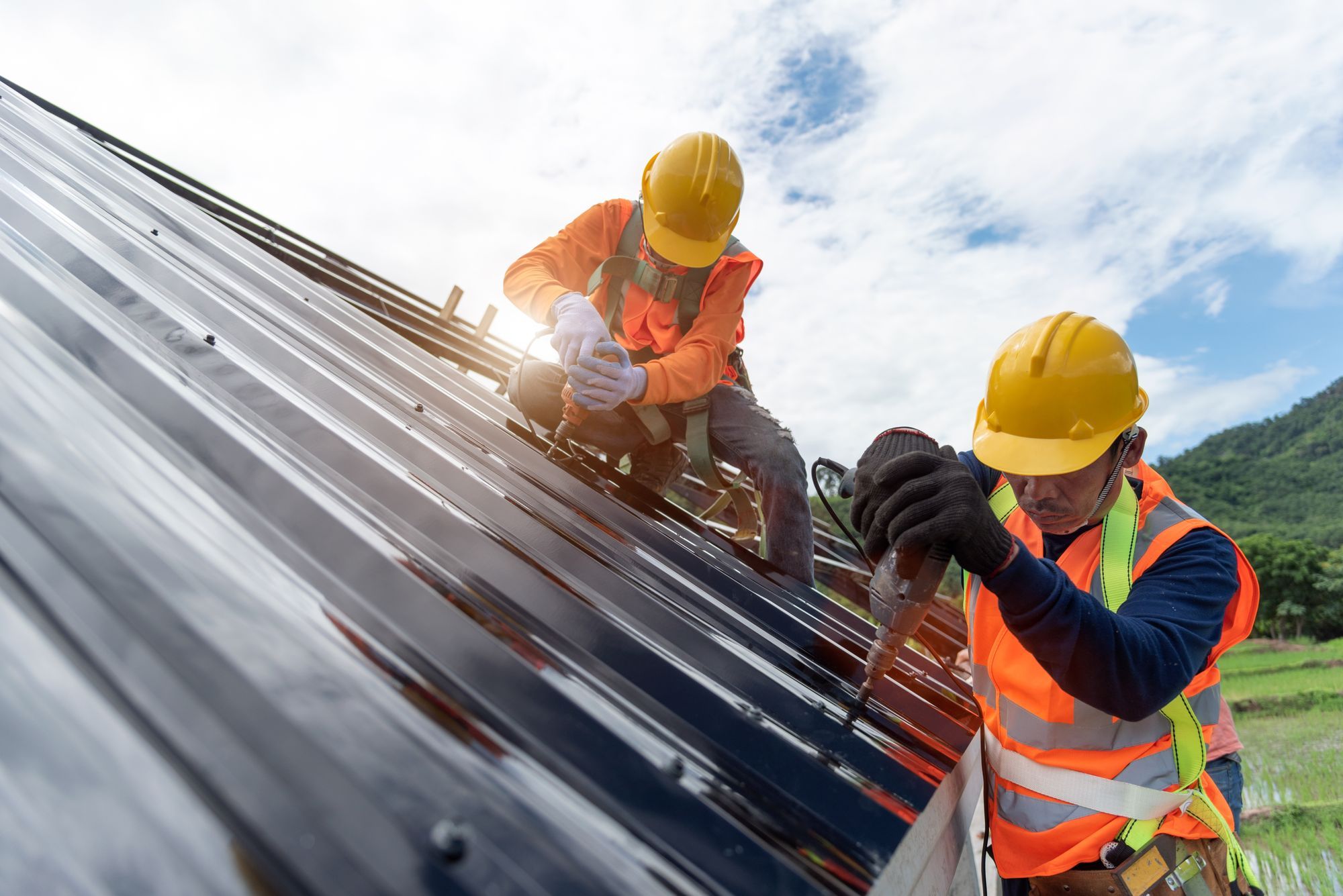Design, performance, and cost are the priorities when homeowners look for roofing options. All these are valid considerations, but if you are conscious of the environment, you have to consider sustainability.
Eco-friendly materials are slowly gaining traction in the construction industry. There are several options when you want an environmentally friendly building material. You have to be proactive in making such decisions to help reduce environmental degradation. With that said, these are your sustainable roofing materials.
Metal Roofs
If longevity, performance, and durability take center stage, you should choose metal roofs. There are a variety of metal materials to pick from. You should go for the coated metal if you want maximum performance. Add a light-reflecting pigment to the metal to make it a cool roof. You won’t have to turn the thermostat every time there is a little sun outside.
The roof can be installed over an existing roof because it is easy to install. It's also very durable, and you can recycle the material once you remove it. Since most people don't use metal roofing, your house can stand out in some areas. Be sure to get installation services from the right contractors.
Tiles
You might want to consider a tiled roof because it is known to last for longevity. It will serve you for more than a hundred years. This kind of roof is favorable in warm climates. The tiles have components that encourage cooling, are easy to recycle and are environmentally friendly. They are curved nicely, which improves housing ventilation. They are also pleasant to look at and may increase the aesthetics of your home.
Roofing tiles are available in numerous colors, from darker to lighter ones that reflect heat to the atmosphere. The thermal mass keeps the air inside the room cool, especially on a hot day. This is part of the reason why tiles are widespread.
Green Roofs
A green roof, otherwise known as a living roof, are the ultimate eco-friendly option. These roofs have plantations and vegetation on them. That's right, plants on your roof. Most people don't like to take this approach when building a house. But you can try it if you want a statement-making roof.
It can be a very beautiful addition to your property. The main advantage is heat absorption. It's like an extra layer of insulation that traps all the heat. It will regulate the temperatures inside the house at all times. People don't use this option because a living roof is expensive to maintain.
It’s not the type of roof you install and forget about it for years. You have to keep the plants from overgrowing beyond the roof. If you like this roof idea, ensure you use the right plants. Heavy trees will overweigh the roofing structure.
Rubber Shingles
If you are on a budget, rubber shingles are your best bet. They are cheaper than most roofs and easy to install and maintain. You can choose any color that goes with the color scheme in your house. Their insulation capabilities will save you a lot of money in heating bills.
Shingles are the most popular roofing materials. Shingles are usually not considered green roofing options, but it becomes environmentally friendly when you add a reflective layer. They are less cool because they are dull in color.
Most shingles won’t come with the reflective pigment; you have to request it for the manufacturers to add the extra layer. With shingles, they have a bumpy surface that reflects light in all directions; it can be the best option for an eco-conscious home.
Solar Roof
You have probably seen homes with solar panels for roofs. This can be a smart move if you want to be environmentally cautious and still save electricity bills. The only difference with the shingles you have now is that these panels can convert solar into electricity. Most buildings that use this option are usually commercial properties.
But you can also put them in your house to maximize the heat from the sun. The only problem is the initial cost. Buying enough solar panels to cover your whole house and hiring people to install them will cost you a lot of money. If you have money to cover the initial cost, this roof will have the most long-term benefits.
Tar Roofs
This kind of roof is modified with plastic materials and modified bitumen that reinforces it. This technology can either be a primary roofing system or top-off an insulated roof. It makes an otherwise very hot material cool. It has a reflective surface that helps maintain favorable temperatures around the house.
The technology requires hot-mopping or torching the surface to seal it completely. Bitumen products have been modified, and the end product contains an attached adhesive that acts as a broad contact sheet. The result is a wind and fire-resistant surface that can also act as a cool roof.
Single-ply Thermoset
If you are a newcomer to the roofing scene, you may not be familiar with this roofing idea. The single-ply thermoset has a roof membrane extracted from cured natural gas and oil. The products bond with other materials to make a roof. They are made in a factory, offering quality seal and construction. It's also a very durable option, and they usually come in the colors white and black.
The thermoset membranes are perfect because they can endure the damaging effects of the sun. The white-colored membrane is essential, especially for a cool roof. It might be a great option to consider in your upcoming roof upgrade. The good thing about green roofing options is that they also keep the house cool.
Single-ply Thermoplastic
The thermoplastic membrane is composed of different chemical compositions from the thermoset. But it also reflects light which makes it eco-friendly. The thermoplastic membrane does not have to be bound to similar material. The materials are welded; they may have fire retardants and materials that absorb light from the sun.
This roofing is good for restaurants and businesses that emit oil through the ventilation system. The membranes have a high resistance to oil, bacterial growth and animal fats. They come as rolls of plastic in cool, slick gray or white, reflecting light. However, if you feel like your house can use such a roof, feel free to use it. Having a cool, environmentally friendly roof can never be a bad thing.
Final Thoughts
Eco-friendly roofing material is the way to go. The trend is becoming more and more relevant as most people start to advocate for change in the construction sector. It’s better to make the change now than wait for years. Pick a roofing idea that is easy to execute within your budget. If you are overwhelmed with all the choices, speak to a roofing expert. Switching to an eco-friendly roof will also benefit your pocket regarding heating bills.



